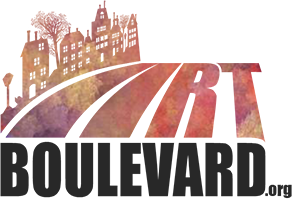Javascript must be enabled to continue!
Genre in media production
View through CrossRef
How do we explain changes in media genres? Are they the result of economic, technological or other kinds of structural forces; or are they the result of the change-producing agency of the media producers? And how are changes in media texts connected to contextual conditions for media production on micro-, meso- or macro levels? This article suggests that a theoretical approach using a pragmatic and socio-cognitive understanding of genre will help us to address these questions. This approach can highlight the interplay between human agency and different kinds of structural forces involved in specific professional media production cultures. Furthermore, it has the potential to integrate media texts and especially the micro- and meso levels of production. Using lessons learned and findings from my recent production study of Danish television satire, the article will argue three major methodological as well as knowledge-producing advantages of a genre approach.
Det Kgl. Bibliotek/Royal Danish Library
Title: Genre in media production
Description:
How do we explain changes in media genres? Are they the result of economic, technological or other kinds of structural forces; or are they the result of the change-producing agency of the media producers? And how are changes in media texts connected to contextual conditions for media production on micro-, meso- or macro levels? This article suggests that a theoretical approach using a pragmatic and socio-cognitive understanding of genre will help us to address these questions.
This approach can highlight the interplay between human agency and different kinds of structural forces involved in specific professional media production cultures.
Furthermore, it has the potential to integrate media texts and especially the micro- and meso levels of production.
Using lessons learned and findings from my recent production study of Danish television satire, the article will argue three major methodological as well as knowledge-producing advantages of a genre approach.
Related Results
Stop-motion to foster digital literacy in Elementary School
Stop-motion to foster digital literacy in Elementary School
Although digital media literacy is recognized as the essential competencies required for living in a new media age, it just starts to gain focus in Taiwan's elementary education. O...
Radical Media Archaeology (its epistemology, aesthetics and case studies)
Radical Media Archaeology (its epistemology, aesthetics and case studies)
Media Archaeology is both a method and an aesthetics of approaching technical objects. Within a broad range of such academic and artistic practices, radical media archaeology will ...
Examining Partisan Reporting of Critical Race Theory Using Meta’s CrowdTangle
Examining Partisan Reporting of Critical Race Theory Using Meta’s CrowdTangle
Mainstream news media outlets can influence the opinions and attitudes of their audience based on how they frame information. This framing can also to polarization. Presently there...
The Effect of Pitch Auditory Feedback Perturbations on the Production of Anticipatory Phrasal Prominence and Boundary
The Effect of Pitch Auditory Feedback Perturbations on the Production of Anticipatory Phrasal Prominence and Boundary
Purpose
In this study, we investigated how the direction and timing of a perturbation in voice pitch auditory feedback during phrasal production modulated the magnitude...
Homo Electromagneticus II: Paradigms and Paradoxes
Homo Electromagneticus II: Paradigms and Paradoxes
Homo Electromagneticus is a musical performance realized in 2022 through a set of original instruments created with open-source and low-cost technologies. Arduino microcontrollers,...
SYSTEM-STRUCTURAL ASPECT OF THE SELECTIONELEMENTS OF ROBOTIC SYSTEMS
SYSTEM-STRUCTURAL ASPECT OF THE SELECTIONELEMENTS OF ROBOTIC SYSTEMS
The article is devoted to solving the problems of technological preparation of robotic production. Currently, the creation of robotic systems has acquired the status of a completel...
Genre and Stylistic Features of the Modern Audiobook
Genre and Stylistic Features of the Modern Audiobook
Modern technological conditions make it possible to create, quickly replicate and use audio books conveniently. Audio books are one of the fastest growing segments of the global pu...
Transformation of the genre of lamentation in modern youth mass media
Transformation of the genre of lamentation in modern youth mass media
The article is devoted to the transformation of the genre of lamentation in modern youth mass media. The ancient genre of lamentation (complaints), as well as the genre of crying i...
Recent Results
Don't Run Out Of STEAM! Barriers to A Transdisciplinary Learning Approach
Don't Run Out Of STEAM! Barriers to A Transdisciplinary Learning Approach
Reform-based instruction can maximize learning and provide equitable access for students in both mathematics and science. A proposal for change by national organizations shed light...
The “Plague of Cyprian”: A revised view of the origin and spread of a 3rd-c. CE pandemic
The “Plague of Cyprian”: A revised view of the origin and spread of a 3rd-c. CE pandemic
AbstractKyle Harper's article on the “Plague of Cyprian” that appeared in this journal in 2015 constitutes the only comprehensive study to date of this important disease outbreak i...










 Your session has timed out for security reasons.
Your session has timed out for security reasons.